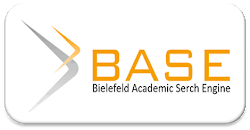Conflict Resolution between Nahdlatul Ulama and Muhammadiyah Congregations in Tumpak Rejo Hamlet, Ponorogo Regency
DOI:
https://doi.org/10.22373/jsai.v3i3.2110Keywords:
Conflict Resolution, NU-Muhammadiyah, ToleranceAbstract
The two largest and most powerful socio-religious groups in Indonesia are Nahdlatul Ulama (NU) and Muhammadiyah. They have members from all over the country and have different religious views regarding some religious rituals aspect. These differences often give rise to friction in the realm of social life. This study aims to describe the conflict resolution between NU and Muhammadiyah in Tumpak Rejo Hamlet, Tambang Village, Pudak District, Ponorogo Regency. This study used a qualitative approach, and the data were obtained from interviews and observations with the residents of Tumpak Rejo Hamlet. This study shows that the conflict between NU and Muhammadiyah members also stems from differences in views about religious practices that take place in society. The role of the village government and community leaders succeeded in producing conflict resolution between the two community groups and, at the same time, creating tolerance and mutual respect between the two. This study concludes that cultivating an attitude of tolerance, a sense of togetherness, and mutual respect between communities is a resolution model that can overcome religious conflicts in society.
References
Aminuddin, Luthfi Hadi. 2018. “Rekonstruksi Wacana Modernis-Tradisionalis: Kajian Atas Pemikiran Keislaman Muhammadiyah Dan Nahdlatul Ulama Pasca Reformasi.” Kodifikasia 12(1):93. doi: 10.21154/kodifikasia.v12i1.1426.
Ansori, Isa, Stain Jurai, and Siwo Metro. 2014. “Perbedaan Metode Ijtihad Nahdlatul Ulama Dan Muhammadiyah Dalam Corak Fikih Di Indonesia.” Nizam 4(1):125–39.
Binfas, Maman Abdul Majid, Mohd Syukri Yeoh Abdullah, and Ahmad Munawar Ismail. 2014. “Tapak Perbezaan Asal Usul Gerakan Muhammadiyah Dan Nahdlatul Ulama (NU) Di Indonesia.” Jurnal Melayu Vol. 12(1):14–31.
BPS. 2021. Kecamatan Pudak Dalam Angka 2021. Ponorogo: BPS Kabupaten Ponorogo.
Fajarini, Ulfah. 2014. “POTRET KONFLIK KEAGAMAAN MASYARAKAT TANGERANG BANTEN DAN RESOLUSI KONFLIK BERBASIS MULTIKULTURALISME DALAM ISLAM.” Al-Tahrir: Jurnal Pemikiran Islam 14(2):341. doi: 10.21154/al-tahrir.v14i2.76.
Ghofur, Abdul. 2022. “Dimensi Pendidikan Agama Islam Dalam Tradisi Praktik Brokohan Dan Sepasaran.” IAI Tribakti Prosiding Dan Seminar Nasional 1(1):135–50.
Ika. 2019. “NU Dan Muhammadiyah Berperan Dalam Menjaga Perdamaian Dunia.” Universitas Gadjah Mada 1. Retrieved December 2, 2022 (https://www.ugm.ac.id/id/berita/17613-nu-dan-muhammadiyah-berperan-dalam-menjaga-perdamaian-dunia).
Rahardjo, Shodiq. 2008. “Konflik Antara Nu Dan Muhammadiyah (1960 – 2002) (Studi Kasus Di Wonokromo Pleret Bantul Yogyakarta).”
Ridder, Hans Gerd, Matthew B. Miles, A. Michael Huberman, and Johnny Saldaña. 2014. Qualitative Data Analysis. A Methods Sourcebook. Vol. 28.
Rofiah, Khusniati. 2017. “Dinamika Relasi Muhammadiyah Dan NU Dalam Perspektif Teori Konflik Fungsional Lewis A. Coser.” KALAM 10(2):469. doi: 10.24042/klm.v10i2.10.
Romadlan, Said. 2017. “Pendekatan Komunikasi Antarbudaya Dalam Memahami Konflik Warga Muhammadiyah Dan Nahdlatul Ulama (NU).” Universitas Muhammadiyah Ponorogo.
Sya’roni, Imam. 2020. “Konflik Paham Keagamaan NU Dan Muhammadiyah Dalam Ritual Tahlilan Di Makam Dongkelan Desa Dabukerja Kecamatan Sukamakmur Kabupaten Hilir Selatan.” UIN Sunan Kalijaga.
Ulya, Azim Zaimatul, and Mucharommah Sartika Ami. 2021. “Expert Validation of The Plant Herbarium Collection Based on Local Wisdom of Sepasaran Bayi.” APPLICATION: Applied Science in Learning Research 1(1):1–5.
Widodo, Sembodo Ardi. 2011. “Konstruksi Keilmuan Muhammadiyah Dan NU.” Jurnal Al- Ulum 11(2):205–38.
Yusuf, Mundzirin, and Sunyoto Usman. 2001. “Konflik Antara Nahdlatul Ulama Dengan Muhammadiyah Dan Resolusinya: Penelitian Di Desa Pegandekan, Kecamatan Kemangkon Kabupaten Purbalingga, Provinsi Jawa Tengah.” Universsitas Gajah Mada.
Downloads
Published
How to Cite
Issue
Section
License
- Authors retain copyright and grant the journal right of first publication with the work simultaneously licensed under an Attribution-NonCommercial-ShareAlike 4.0 International (CC BY-NC-SA 4.0) that allows others to share the work with an acknowledgment of the work's authorship and initial publication in this journal.
- Authors are able to enter into separate, additional contractual arrangements for the non-exclusive distribution of the journal's published version of the work (e.g., post it to an institutional repository or publish it in a book), with an acknowledgment of its initial publication in this journal.
- Authors are permitted and encouraged to post their work online (e.g., in institutional repositories or on their website) prior to and during the submission process, as it can lead to productive exchanges, as well as earlier and greater citation of published work.













